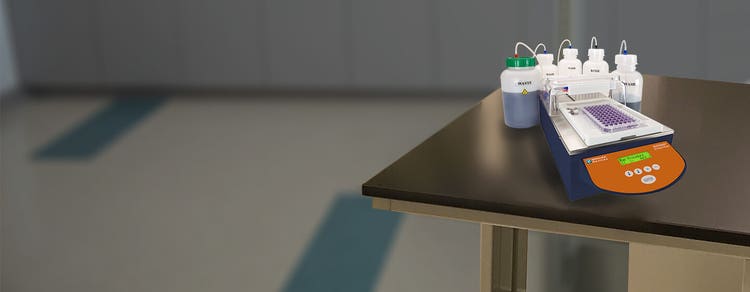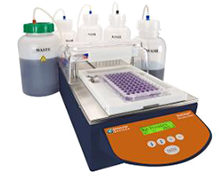

MultiWash+ Microplate Washer
96- and 384-well automated washer
Compact microplate washer with maximum flexibility in a minimum footprint
The MultiWash+™ Microplate Washer is an automated, compact, quiet, efficient washer with 20 different wash protocol options. The variations include adjustable speed and volume, adjustable aspiration speed and time, adjustable soak times, and three modes of shaking. Four wash/rinse bottles are included and configurable for both 96- and 384-well plates.

Achieve efficiency
Achieve efficient washing with cross-wise aspiration and reduce residual volume within each well. The washer is vacuum and pressure free, with on-board pumps for a quiet wash experience.

Eliminate pressurized bottles
The washer can dispense in 50-μL increments and tubing can be inserted into a variety of containers because pressurized bottles are not required.

Gain benefits for lower throughputs
Gain benefits of a microplate washer for lower throughput applications and any assay that needs washing as a primary, intermediary, or final step before quantitation.

MultiWash+ Microplate Washer
Features

Walk-up usability
The 20 different wash protocols include up to eight cycles within each protocol for walk-up usability and flexibility.

Configurable Washing
Settings include adjustable speed and volume, adjustable aspiration speed and time, and adjustable soak times, with three modes of shaking available to mix solutions.